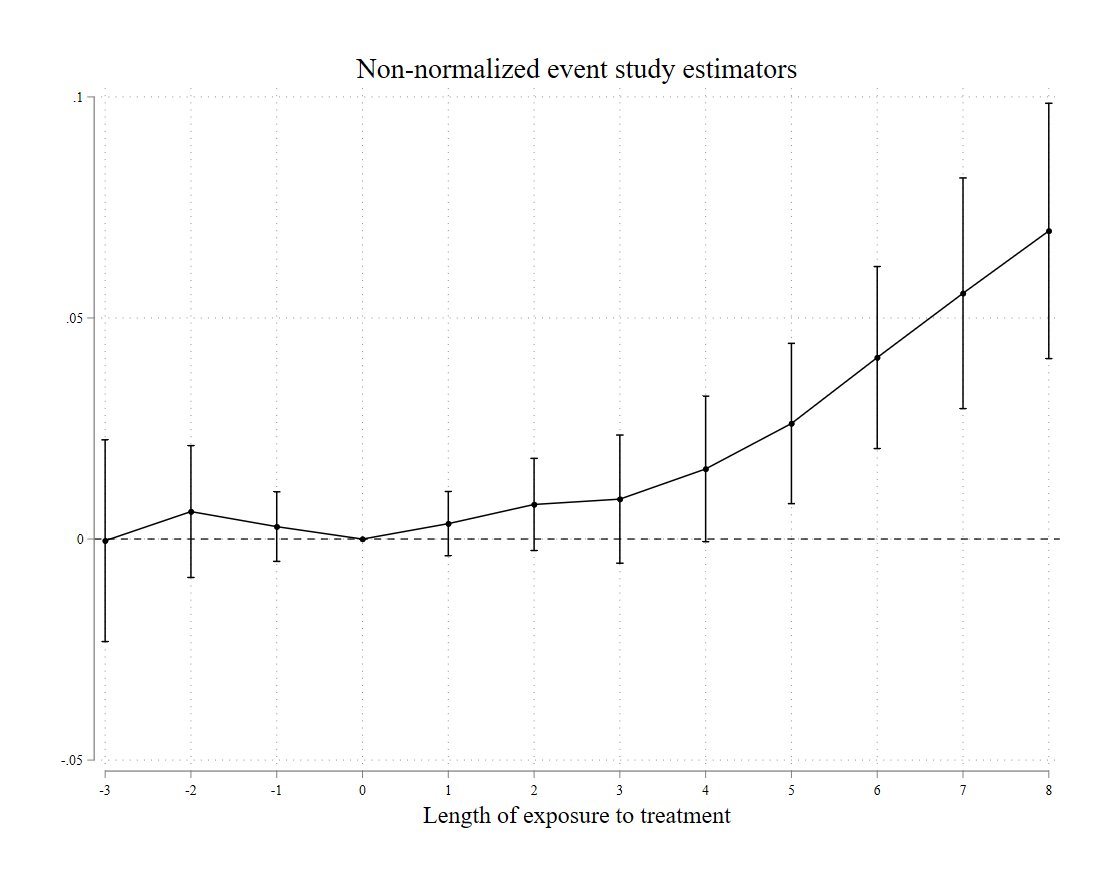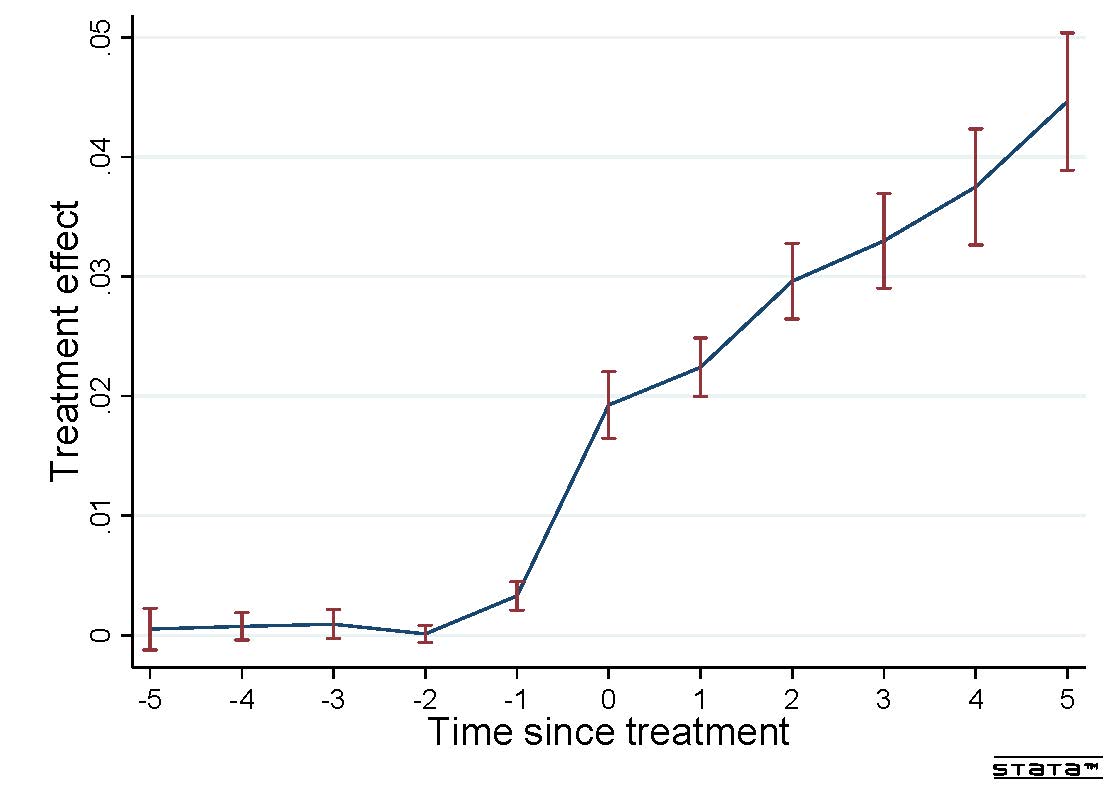
Professor @sciencespo @ScPoEcon Faculty Affiliate @Jpal_Global #econometrics #education
How to get URL link on X (Twitter) App


 The paper proposes DID event-study estimators, for complex designs where treatment might be binary, discrete, or continuous, groups may experience multiple changes of their treatment, and outcome may be affected by current and lagged treatments. Widely applicable!
The paper proposes DID event-study estimators, for complex designs where treatment might be binary, discrete, or continuous, groups may experience multiple changes of their treatment, and outcome may be affected by current and lagged treatments. Widely applicable!

 We start by showing that panel Bartik coeff theta^b not robust to heterogeneous effects.
We start by showing that panel Bartik coeff theta^b not robust to heterogeneous effects. 

 Syntax: did_multiplegt y g t d
Syntax: did_multiplegt y g t d 


 did_multipleGT can be used in DID designs with multiple groups and periods, where all units in same group and period have same treatment (sharp designs). E.g.: treatment is county- or state-level variable. Treatment does not have to be binary. 2/n
did_multipleGT can be used in DID designs with multiple groups and periods, where all units in same group and period have same treatment (sharp designs). E.g.: treatment is county- or state-level variable. Treatment does not have to be binary. 2/n